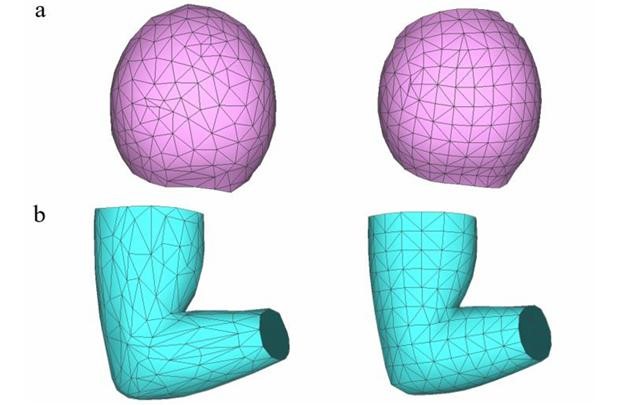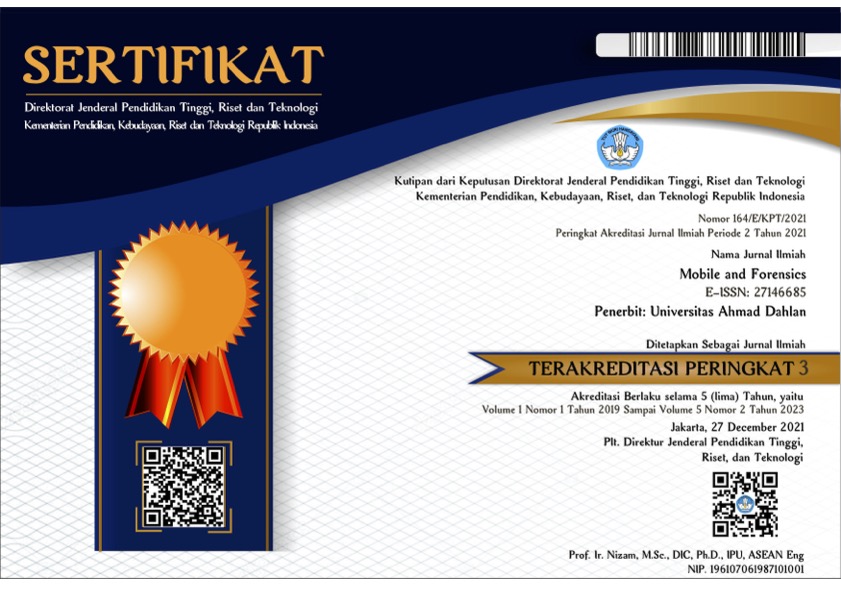Rediscover Story Of Muhammadiyah Through 3D Game By Applying Game Development Life Cycle
DOI:
https://doi.org/10.12928/mf.v6i2.11388Abstract
Though specifically in Indonesia, Muhammadiyah is already well known but there are still some who do not know their history. This makes people that do not know about Muhammadiyah and the history behind it to make unfounded assumptions about the Islamic refined organization. The purpose is to make an educational game based on Muhammadiyah Museum to further increase the wisdom of players about Muhammadiyah’s history and also to remember and know the history behind each artifact is visualized in form of a game to increase the player’s knowledge. The game development for players will be developed using the Game Development Life Cycle (GDLC) methodology and mostly the modelling technique that will be used is mesh modelling technique in Blender. Each step of this methodology is fitting for the game development and the step might be skipped or swapped according to the needs of research. There are 2 black box tests conducted, the first black box test that has 15 functions result is 47% in accordance with several bugs found which was fixed in the second black box test that resulted 87% in accordance, 13% not in accordance because of the feature was not yet implemented but listed in the main menu. The second test conducted which results and practicality of this educational game using the System Usability Scale (SUS) which consists of 10 instrument statements were scored 85.3 which means that this educational game was declared excellent and acceptable.
References
N. David Bowman, J.-H. T. Lin, And K. Koban, “Technology, Mind & Society 2021 Conference Proceedings Demanding On Many Dimensions Validating The Interactivity-As-Demand Measurement Model For Vr-Based Video Games,” 2021, Doi: 10.1037/Xxxxxxx.
N. Fitriyadi And W. Wuryandani, “Is Educational Game Effective In Improving Critical Thinking Skills?,” Jurnal Prima Edukasia, Vol. 9, No. 1, Jan. 2021, Doi: 10.21831/Jpe.V9i1.35475.
F. Daffa, N. Zhafran, F. Prasetyanto, And T. Zani, “Aplikasi Multimedia Interaktif Untuk Museum Geologi Bandung Modul Game Edukasi Interactive Multimedia Applications For The Bandung Geology Museum Educational Game Module.”
F. D. B. S. Putra, R. Umar, And S. Sunardi, “The Visualisation Of Muhammadiyah Museum Using Augmented And Virtual Reality Technology,” Sinergi, Vol. 25, No. 2, P. 119, Feb. 2021, Doi: 10.22441/Sinergi.2021.2.002.
“5269-12987-2-Pb”.
E. C. Herbst, L. E. Meade, S. Lautenschlager, N. Fioritti, And T. M. Scheyer, “A Toolbox For The Retrodeformation And Muscle Reconstruction Of Fossil Specimens In Blender,” R Soc Open Sci, Vol. 9, No. 8, Aug. 2022, Doi: 10.1098/Rsos.220519.
A. M. Ciekanowska, A. Krzysztof Kiszczak -Gliński, And K. Dziedzic, “Comparative Analysis Of Unity And Unreal Engine Efficiency In Creating Virtual Exhibitions Of 3d Scanned Models Analiza Porównawcza Wydajności Silników Unity I Unreal Engine W Aspekcie Tworzenia Wirtualnych Pokazów Modeli Pochodzących Ze Skanowania 3d,” 2021.
B. Choi And J. Kim, “Changes And Challenges In Museum Management After The Covid-19 Pandemic,” Journal Of Open Innovation: Technology, Market, And Complexity, Vol. 7, No. 2, Jun. 2021, Doi: 10.3390/Joitmc7020148.
E. King, M. P. Smith, P. F. Wilson, And M. A. Williams, “Digital Responses Of Uk Museum Exhibitions To The Covid-19 Crisis, March – June 2020,” Curator, Vol. 64, No. 3, Pp. 487–504, Jul. 2021, Doi: 10.1111/Cura.12413.
M. D. Winaldo And L. Oktaviani, “Influence Of Video Games On The Acquisition Of The English Language,” 2022. [Online]. Available: Http://Jim.Teknokrat.Ac.Id/Index.Php/English-Language-Teaching/Index
W. Novayani, “Game Genre Untuk Permainan Pembelajaran Sejarah Berdasarkan Kebutuhan Pedagogi Dan Learning Content,” 2019. [Online]. Available: Https://Jurnal.Pcr.Ac.Id/Index.Php/Jkt/
F. Rehbein, D. L. King, A. Staudt, T. Hayer, And H. J. Rumpf, “Contribution Of Game Genre And Structural Game Characteristics To The Risk Of Problem Gaming And Gaming Disorder: A Systematic Review,” Jun. 01, 2021, Springer Science And Business Media Deutschland Gmbh. Doi: 10.1007/S40429-021-00367-7.
A. Akhrian Syahidi, A. Afif Supianto, T. Hirashima, And H. Tolle, “Learning Models In Educational Game Interactions: A Review,” International Journal Of Engineering Education, Vol. 3, No. 1, Pp. 1–7, 2021, Doi: 10.14710/Ijee.3.1.11-29.
J. Lasmana Putra And C. Kesuma, “Penerapan Game Development Life Cycle Untuk Video Game Dengan Model Role Playing Game.” [Online]. Available: Http://Jurnal.Bsi.Ac.Id/Index.Php/Co-Science
R. Y. Ariyana, Erma Susanti, Muhammad Rizqy Ath-Thaariq, And Riki Apriadi, “Penerapan Metode Game Devlopment Life Cycle (Gdlc) Pada Pengembangan Game Motif Batik Khas Yogyakarta,” Insologi: Jurnal Sains Dan Teknologi, Vol. 1, No. 6, Pp. 796–807, Dec. 2022, Doi: 10.55123/Insologi.V1i6.1129.
F. Amin, M. Fhadli, A. Arief, And Y. Muin, “Dungeon Code: Educational Game For Algorithm And Data Structure Courses By Applying The Game Development Life Cycle Method,” 2023. [Online]. Available: Www.Techniumscience.Com
Z. S. Gharehtappeh And Q. Peng, “Simplification And Unfolding Of 3d Mesh Models: Review And Evaluation Of Existing Tools,” In Procedia Cirp, Elsevier B.V., 2021, Pp. 121–126. Doi: 10.1016/J.Procir.2021.05.023.
“Game Edukasi Pengenalan Tumbuhan Hijau Untuk Sekolah Dasar.”
P. Huriati, H. Azmi, Y. Wati, D. Meidelfi, And T. Lestari, “Black Box Testing On The Online Quiz Application Using The Equivalence Partitions Method,” 2020.
U. Ependi, T. B. Kurniawan, And F. Panjaitan, “System Usability Scale Vs Heuristic Evaluation: A Review,” Jurnal Simetris, Vol. 10, No. 1, 2019.
P. Vlachogianni And N. Tselios, “Perceived Usability Evaluation Of Educational Technology Using The System Usability Scale (Sus): A Systematic Review,” Journal Of Research On Technology In Education, Vol. 54, No. 3, Pp. 392–409, 2022, Doi: 10.1080/15391523.2020.1867938.
D. Tresnawati, S. Rahayu, R. Maulana, And I. Komputer, “Educational Game Design For Carbon Emission Using Game Development Life Cycle Method,” Ultimatics : Jurnal Teknik Informatika, Vol. 16, No. 1, 2024.

Downloads
Published
Issue
Section
License
Copyright (c) 2024 Achmad Nur Hafizh, Ahmad Azhari

This work is licensed under a Creative Commons Attribution-ShareAlike 4.0 International License.
Start from 2019 issues, authors who publish with JURNAL MOBILE AND FORENSICS agree to the following terms:
- Authors retain copyright and grant the journal right of first publication with the work simultaneously licensed under a Creative Commons Attribution License (CC BY-SA 4.0) that allows others to share the work with an acknowledgment of the work's authorship and initial publication in this journal.
- Authors are able to enter into separate, additional contractual arrangements for the non-exclusive distribution of the journal's published version of the work (e.g., post it to an institutional repository or publish it in a book), with an acknowledgment of its initial publication in this journal.
- Authors are permitted and encouraged to post their work online (e.g., in institutional repositories or on their website) prior to and during the submission process, as it can lead to productive exchanges, as well as earlier and greater citation of published work.

This work is licensed under a Creative Commons Attribution-ShareAlike 4.0 International License.











 Mobile and Forensics (MF)
Mobile and Forensics (MF)